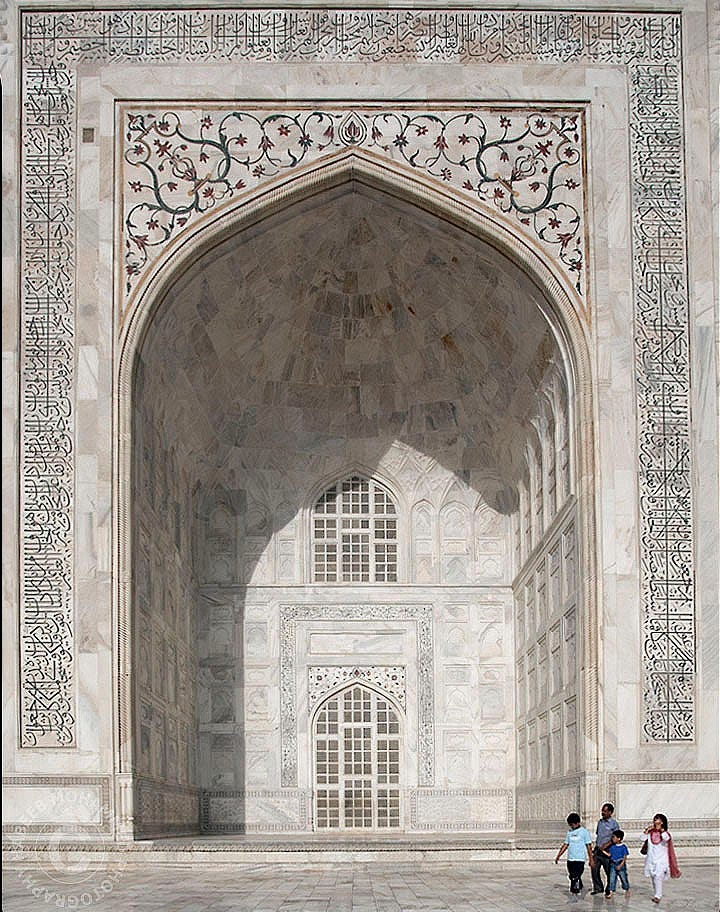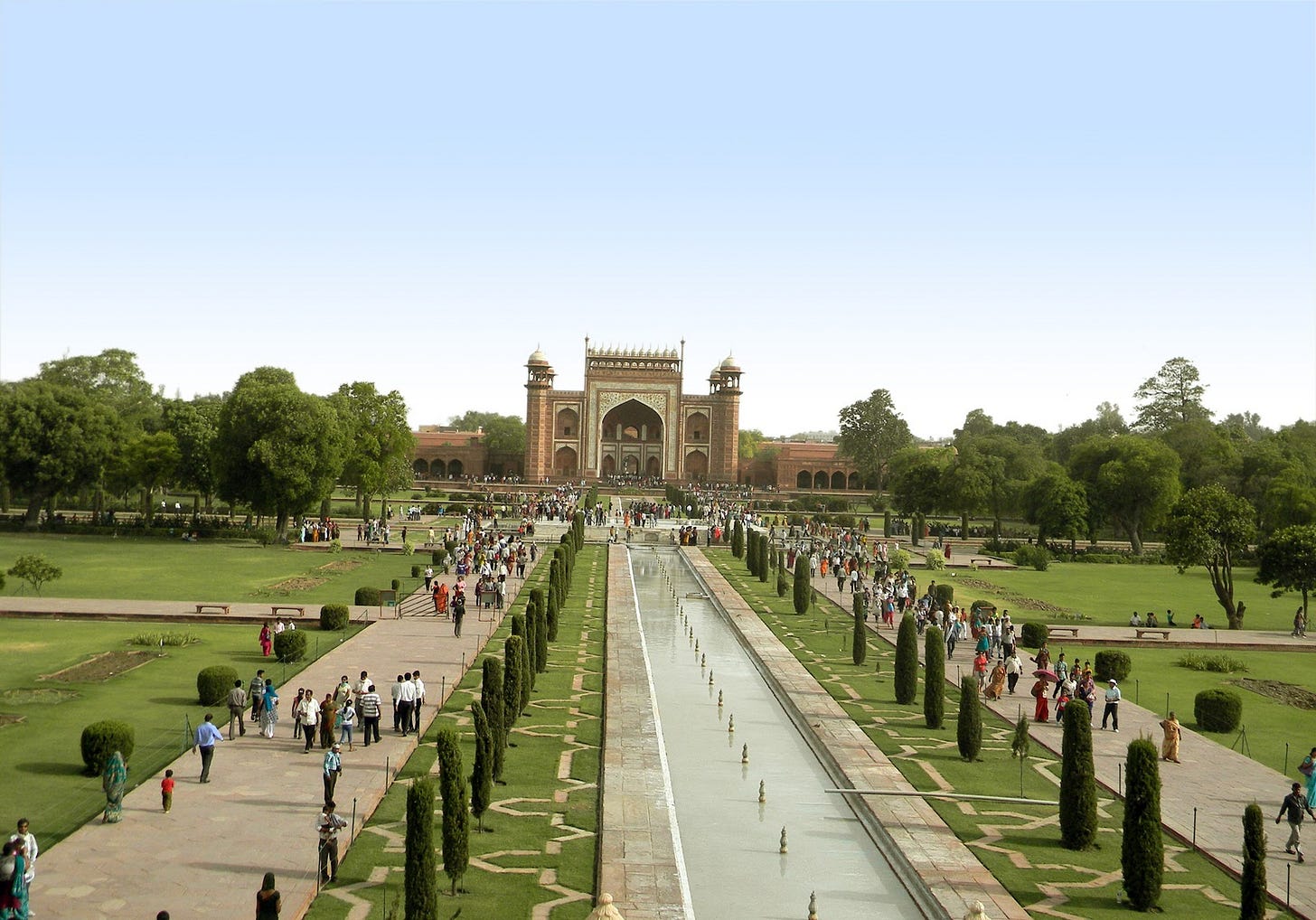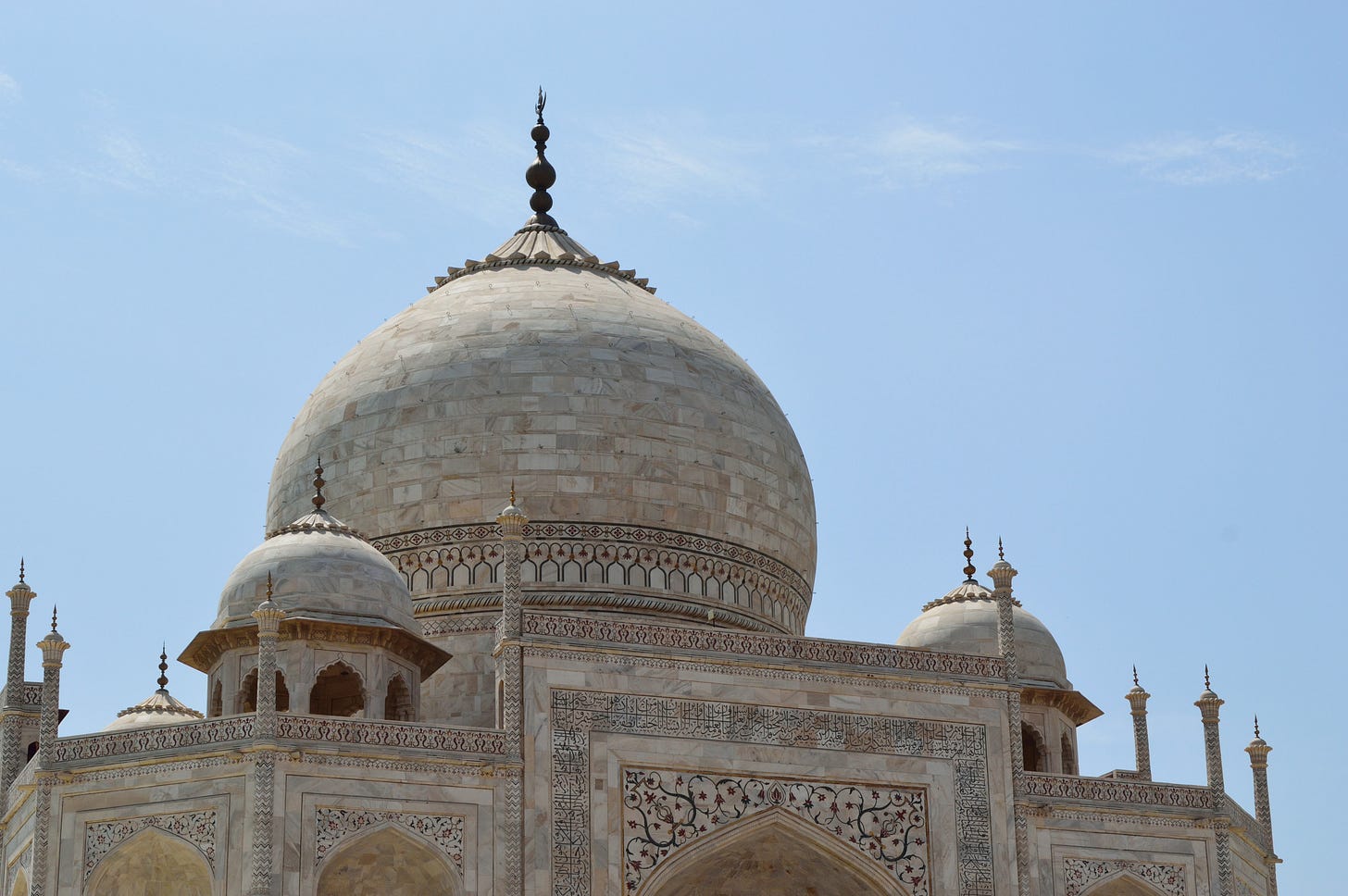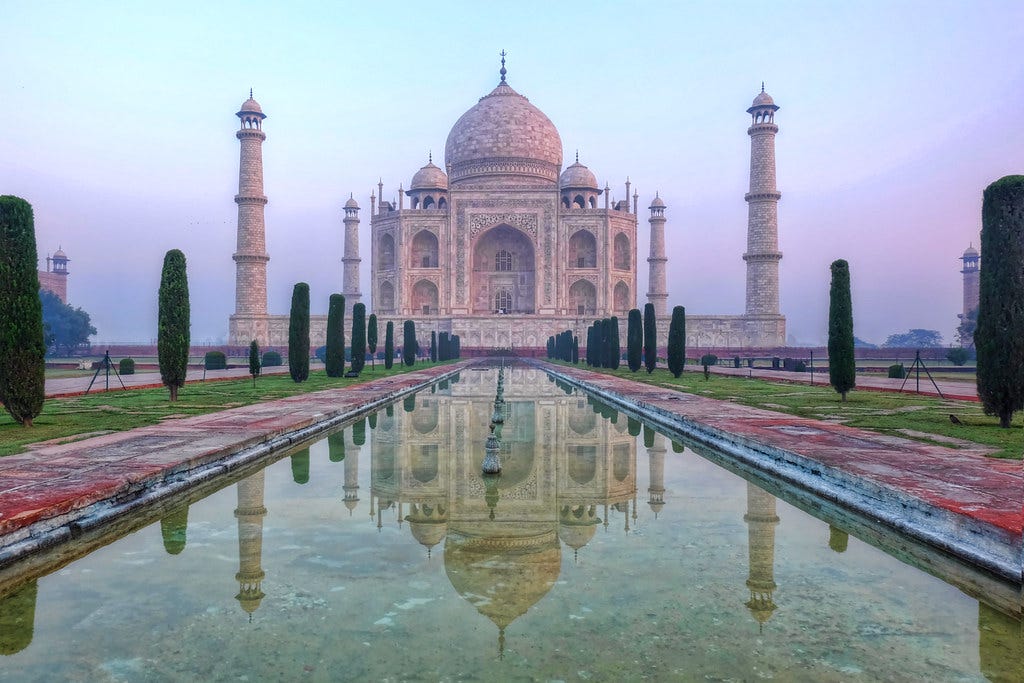Everything You Need to Know About Taj Mahal
Part 1/2: Architecture, Structure, and Visual Tricks

Introduction
Taj Mahal (Crown of the Palace) is a mausoleum on the southern bank of Yamuna river in Agra, India, built by Mughal ruler Shah Jahan in memory of his favourite wife, Mumtaz Mahal. The mausoleum also contains the tomb of Shah Jahan. It was commissioned in 1632 and the mausoleum building was completed in 1648. The 17-hectare complex of Taj Mahal also contains a mosque and a guest house.
Construction of the Taj Mahal is estimated to have cost 3.2 crores rupees at the time, which amounts to roughly 7,000 crore rupees today (about 1 billion US dollars). The Taj Mahal was designated as a UNESCO World Heritage Site in 1983 for being "the jewel of Muslim art in India and one of the universally admired masterpieces". One of the seven wonders of the world, the Taj attracts 4-8 million visitors every year. Let us learn more fascinating facts on various aspects of the historical monument.
Architecture
The Taj Mahal is considered one of the finest examples of Islamic architecture. Ustad Ahmad Lahauri, the court architect to the emperor, is credited with its architecture. The design of the Taj is an amalgamation of Indo-Islamic and Mughal styles.

The building plan drew some inspiration from previous Timurid and Mughal buildings, such as the Gur-e-Amir (Timur’s tomb) and Humayun's tomb. While red sandstone was the staple for previous Mughal buildings, Taj Mahal is unique in its use of white marble, with adornment of several precious and semi-precious stones, for its construction.
Symmetry, contrast and monumental scale form the main features of the Taj complex’s design. With the main mausoleum placed at one end of the central axis, two identical buildings- the Mosque and its Jawāb-are placed on either side, providing a sense of bilateral symmetry. Also, they are built of red sandstone, which contrasts richly with the white marble of the mausoleum. As humanlike forms are prohibited in Islam, calligraphy and vegetative motifs were predominantly used to decorate the walls of the mausoleum.
Considered one of the greatest achievements in architecture, Taj Mahal exhibits an exquisite combination of solids and voids, and concave and convex spaces, while flaunting traditional Islamic elements such as domes and arches. Taj Mahal's original Mughal garden included rich flower and fruit trees. In the later part of the 19th century, however, the British empire transformed the garden with formal rows of shrubs and trees to reorient it to their European style lawns.
Structure
At a height of 73 meters, Taj Mahal is slightly taller than Qutub Minar. The base of the mausoleum building consists of a large cube with chamfered corners forming an eight-sided shape that measures 55 meters on each of the four long sides.
A colossal dome, 35 meters in height, surmounts the tomb. The size of the dome is emphasized by four smaller domed kiosks (chhatris) at its corners, which replicate the main dome. Tall spires (guldastas) emanating from the edges of the base walls further accentuate the height of the dome. Four tall minarets are placed facing each of the chamfered corners. The mausoleum and the minarets rest on one firm masonry bed.
Visual Tricks
One of the wonders of the world, Taj Mahal is a feast for the eyes as it plays several optical tricks and illusions. Some of these are explained here.
1. Glow in different colours: The Taj glows in different colours through the day. It appears soft pink as the sun rises, gleaming white at noon, milky white in the evening, and exhibits a golden hue under the sparkle of full moon.

2. Minarets appearing vertical: The four minarets are actually provided with an outward tilt, rather than straight, so that they appear vertical to observers as a result of perspective viewing. This also ensures the safety of the mausoleum, as in case of a calamity such as an earthquake, the minarets would collapse away from the tomb and not over it.

3. View of the Taj from the main gate: The main gate of the Taj plays the "Ebbinghaus illusion", an optical trick of relative size perception. When seen through the gate from a distance, the monument appears near and large. But on entering through the gate, counterintuitively, it appears to shrink in size, with more of its background being dramatically revealed. As a result of this illusion, on exiting the monument, visitors leave with a final close-up view of the Taj.
The next and final part of this article will cover the aspects of Materials and Construction, Foundation, and Threats to the Taj. Stay tuned!







